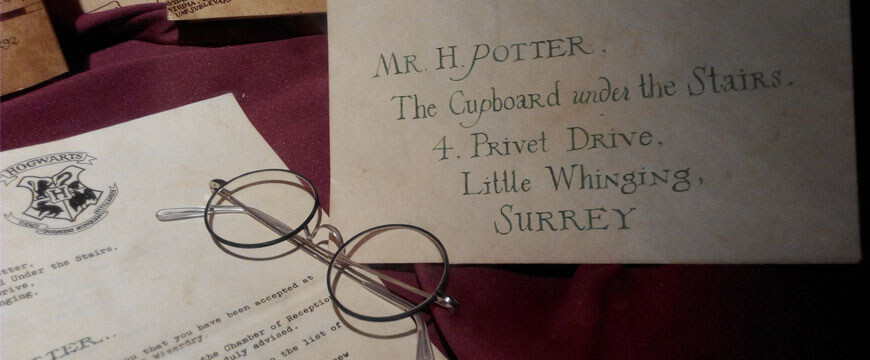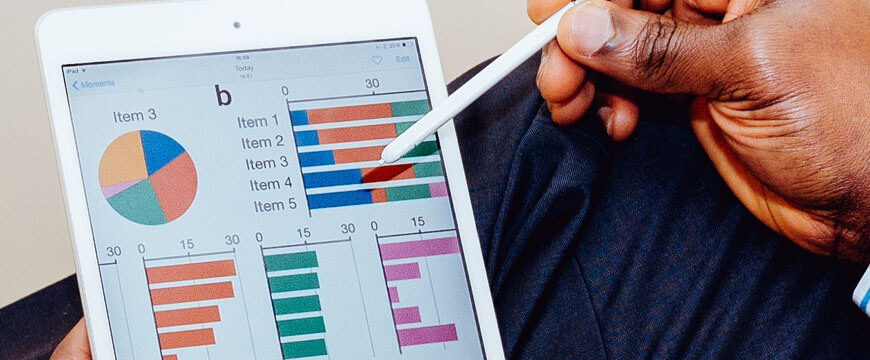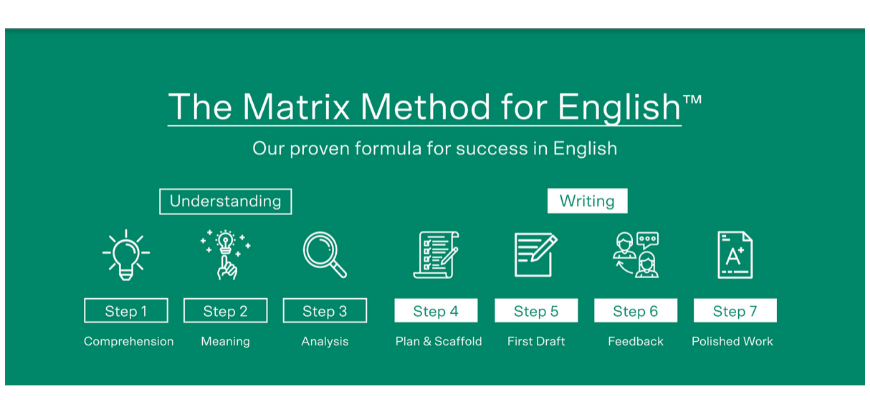Welcome to Matrix Education
To ensure we are showing you the most relevant content, please select your location below.
Select a year to see courses
Learn online or on-campus during the term or school holidays
Learn online or on-campus during the term or school holidays
Learn online or on-campus during the term or school holidays
Learn online or on-campus during the term or school holidays
Learn online or on-campus during the term or school holidays
Learn online or on-campus during the term or school holidays
Learn online or on-campus during the term or school holidays
Get HSC exam ready in just a week
Select a year to see available courses
Science guides to help you get ahead
Science guides to help you get ahead

Guide Chapters
When students hear non-fiction, they automatically think that it’s going to be boring and hard. However, this is not true! This article will make analysing prose non-fiction easy and fun!
Non-fiction texts are informative or persuasive pieces of writing across a broad range of topics.
Non-fiction texts can encompass:
Non-fiction texts aim to inform or persuade their audiences using argumentation, opinion, and evidence drawn from real-life situations and people, scientific reports, and statistics.
However, these topics and approaches don’t mean that non-fiction texts can’t use fictional conventions. Composers can still create storylines, give vivid descriptions and use figurative language.
In fact, employing narrative conventions and techniques can better inform and persuade audiences!
Complicating things, non-fiction texts include a wide range of forms. However, to narrow it down, we will only be looking at how to analyse PROSE non-fiction in this post.
This means that we will NOT be looking at non-fiction images like charts or infographics. We already went through this in our last post, PART 7: HOW TO ANALYSE IMAGES AND VISUAL TEXT.
Let’s start at trying to separate fact from opinion.
When you read a non-fiction text, you will come across facts and opinions.
Facts are information that is proved to be true.
Whereas, opinions are personal views, perspectives or judgements about a particular situation that is not necessarily based on facts.
So, when we read non-fiction texts, we are learning about our world in a factual way instead of a more abstract way. There are some benefits of this:

There are many types of prose non-fiction texts that you will come across in High School English. Let’s take a look at what they are and their features.
Feature articles are the main or lead stories in magazines and sometimes newspapers. They are designed to grab the audience’s attention and go in depth about a topic.
They are usually subjective, opinion based, and entertaining.
The defining feature of a feature article is the way it is structured. Usually, there is a narrative in their stories to captivate the audience and make it interesting.
Sometimes, the main point isn’t even addressed until the end.
Reviews are articles that critique. They can evaluate books, movies, restaurants, places and so many other things.
Although reviews usually give concise summaries of their subject, it is NOT a summary.
Instead, they are critical assessments of things or places. Reviews usually provides a final conclusion on whether or not the subject will be worth the audience’s time.

These were traditionally the domain of newspaper organisations, but the digital revolution has led to a proliferation of non-traditional organisation reporting on news events – with varying degrees of accuracy and objectivity.
Newspaper articles are pieces of writing that inform the audience about a situation, event or issue. Usually, they report something that has recently occurred.
The traditional aim of newspaper articles is to inform their audience, but since the late 20th century they have also tried to persuade audiences of a certain perspective of events.
Newspaper articles focus on content rather the structure (unlike feature articles).
So, newspaper articles are simple, informative, factual and formal but not necessarily objective.
Biographies are purported to be true detailed accounts about a real person’s life, that is written by someone else.
This includes books, films, documentaries, etc.
Usually, biographies focus on specific aspects of the subject’s life and go into detail. A biography’s purpose is to reveal intimate and personal information about the subject’s life, thoughts, and experiences.
They also follow a narrative structure. We assume their content to be true, accurate, and objective, but this is often not entirely the case.

Autobiographies are detailed accounts about a person’s life that is written by them.
Their features and purposes are identical to biographies (above). Similarly, we often assume they have an objectivity in their content that is not there.
A detailed account based on observations of a specific event, situation or person.
There are many different types of reports. You may have seen experimental reports, report cards, business reports etc.
Their purpose is to collate, investigate, and present information based on observations, experiements, or data collection. Reports often include a section which suggests ways to improve or solve an issue.
Journal articles are essays and reports that focus on a specific subject or interest.
They are included in journals that are regularly published (eg. monthly, yearly…), come in volumes or collections and are written by qualified people in the field (eg. experts, scholars…)
It’s aim is to present recent research about the topic.
Some examples of journals include Nature, Journal of Business Research, Journal of Neuroscience, and Oxford Journal of Legal Studies.

Memos is short for memorandums. Memorandums are informative letters or accounts used for legal purposes or shared within a company.
They are short, concise but informative letters and accounts, they are often sent by individuals in the same company or government or government agency.
It’s purpose is to quickly inform readers about the company changes, upcoming meetings, reminders, summaries etc.
The language used is very simple, direct, clear and unambiguous because the intended audience will usually skim over it.
Memos also usually conclude with a call to action directing individuals to do something.

Diaries are private logs of a person’s daily life, experiences, thoughts and feelings.
They differ from an autobiography because they are not written to be published and do not have an intentional overarching narrative.
Instead, they are just recounts of individual moments, written with the intent to document, vent, or discuss. Diary entries tend to be logged regularly.
There are many different types of diary entries, like secret diaries, travel diary, food diary etc.
Letters and emails are both forms of communication. They are messages sent to an intended recipient.
Letters are handwritten and are usually sent in an envelope, whereas, emails are sent electronically.
They can be formal or informal. They can be long or short. They can be personal or for work.
Letters and emails are used for a variety of reasons.

Obviously, non-fiction texts have their own set of unique features.
However, you may find that some of the techniques overlap as literary techniques…
This is because figurative language makes stories more interesting. And non-fiction texts still need to be interesting to be found compelling and remembered.
Here are some of the techniques you need to look for in a non-fiction text:
Technique | Description | Example |
| Allusions | A reference to other texts, past events, historical moments, famous people etc. | Margaret Atwood makes an allusion to the nursery rhyme, “There was a girl with a curl in her hair”. |
| Analogy | Making a comparison between two situations to prove a point. | Ursula Le Guinn makes the following analogy in her short story, “Solitude“: “I never knew anybody, anywhere I have been, who found life simple. I think a life or a time looks simple when you leave out the details, the way a planet looks smooth, from orbit.” |
| Anaphora | Repetition of a word or phrase at the beginning of the sentence. | “We brought the alcohol. We brought the guns. We brought the diseases. ” – Paul Keating |
| Anecdote | A short story about a real situation or person. | Recounting a childhood story. |
| Emotive language | Words that are deliberately chosen because of their ability to evoke an emotional reaction from the audience. | From “The boy was killed” to “The young and innocent boy was killed in cold blood” |
| Ethos | Showing authority or credibility to convince an audience of your argument. Usually by stating your status, experience etc. | Noel Pearson establishes that he is an Indigenous Australian before he talks about the changes needed to establish Indigenous Australian rights. |
| Graphics / Illustrations | This includes any charts, photograph or images. |  |
| High Modal words | Words that show high certainty. | Must, will, it is, need to… |
| Hyperbole | An exaggeration. | Yesterday was scorching hot. I nearly died. |
| Imagery | A vivid description that creates a strong image based on the senses of sight, hearing, smell, taste or touch. | When he opened the door, a strong aroma of coffee beans and banana bread tickled his nose. |
| Jargon | Words or expressions that are used and understood by a specific group of people, usually in professions. | Terms like mens rea, cause of action and affidavit are legal jargon |
| Logos | Using logic (facts, statistics and data…) to convince an audience of your argument. | According to the Cancer Council, nearly 1/3 of Australians have skin cancer. |
| Pathos | Appealing to the audience’s emotions to convince them of your argument. Usually by using figurative language like emotive language, high modality, metaphors etc. | We are all humans. It is time we start acting like it. |
| Pronouns | Words that replaces a noun in a sentence. | He, she, we, I, our, it, they… |
| Metaphor | A comparison that says that one thing is the same as the other. | The blanket of stars… |
| Motif | A recurring image, symbol or icon throughout a text. | Anwar Sadat uses the motif of God in his address to the Israeli Knesset. |
| Repetition | Repeating a word or phrase. | Go, go go! |
| Symbolism | When an object represents more complex ideas. | In William Deane’s speech, the golden wattle symbolises Australian identity. |
| Tone | Word choices that indicate how the composer feels. | Sombre, anxious, excited tones… |
| Quotes | To repeat a book’s, person’s or another source’s words with credit. | As Ghandi said, “An eye for an eye ends up making the whole world blind!” |
Analysing prose non-fiction is not so different from fiction texts.
Before we go into a step-by-step method, here are some points that you need to consider when analysing non-fiction.
This refers to everything that could have influenced the composer’s perspective and views on life, including personal life, historical context, environmental context, social context etc.
Why is it important that we look at this aspect when analysing prose non-fiction texts?
Well, most non-fiction texts’ purpose is to inform and convince the audience. So, by knowing what is going on in the world and in their lives, we can figure out why what they are saying is important.
For example, someone born in the 21st century will be more concerned about climate change than someone living in the 18th century. Climate change wasn’t even a thing in the 18th century!
This allows us to better figure out what is the text’s message.

Although, we do look at intended audiences in fictional texts, we don’t really focus that much on it.
However, when we analyse non-fiction texts, it is very important that we know who the intended audiences are.
This is because the language and composition of these texts will differ according to the audience.
For example, if you were writing a speech about climate change for environmental scientists, you can use scientific terms, jargon and sophisticated language when presenting it and know that your audience will understand it.
However, if you are writing a speech about climate change for primary school kids. You can’t use these scientific terms, jargon or sophisticated language. You need to use simple, clear and concise language that kids will understand.
This is why it is important that we look at the intended audience when you analyse prose non-fiction texts.
Composer’s purpose is the reason why the composer wants to discuss a specific topic. It is the intended message.
Sometimes, the way the audience receives the message is different from what the composer really wanted. But this is all part of the communication process between composers and audiences.
To figure out the composer’s purpose, we have to take a look at the intended audience, context and content.
Usually, the composer will explore a personal issue, whether it is a private life issue or a social issue that is existing in their time.
Who they are talking to will also determine what type of message they are trying to give.
For example, if a speech promoting racial equality is presented to an audience of that minority group, we can assume that they are trying to call for unity and strength to fight back discrimination. However, if the intended audience of the speech is political members, then we can see that the composer is trying to call for legal change regarding racism.

If you can follow a process for doing something, it becomes much easier as you know exactly what you need to do.
You know that there’s a process for analysis, right? Matrix students are taught the Matrix MethodTM to read, understand and analyse prose non-fiction texts.

We will go through some methodical steps to analyse prose non-fiction that will help us better understand our text and prepare us to write.

Now that we know the steps, let’s go through them in detail, using JK Rowling’s speech, ‘The Fringe Benefits of Failure and the Importance of Imagination’.
Click here to read and watch the speech.
Before we see how to analyse prose non-fiction, it is important that we know everything about the overall text.
Here are some points that you need to look at to do this:
Sometimes, you need to research more information about the composer’s context, or the speech’s context to get a good grasp of the text.
Let’s analyse Rowling’s speech.
When you analyse prose non-fiction texts, you also need to look at the structure and purpose of the structure.
This is because the structure helps the composer convey their message to the audience and make their argument sound more convincing.
The most common structure for speeches are:
Now, let’s apply this to Rowling’s speech.

As you see, Rowling’s speech structure slowly leads her audience to her final take-home message.
Now that you know about the structure of your prose non-fiction, you need to look for techniques to further analyse it.
Ideally, you should be looking for techniques from each section as well as holistic techniques.
Firstly, in Rowling’s speech, we can find:
Remember, identifying techniques is not enough, you also need to analyse them.
To do this, you need to find meaning and relate it to the composer’s purpose.
Let’s analyse the techniques we’ve found:

Finally, let’s consider the intended audience and Rowling’s context to determine the purpose of the whole speech.
Remember, her audience are Harvard students. They most likely would have never ‘been acquainted with failure‘ before.
So, when they do ‘fail’ in ‘real life’, they might simply give up on their goals.
This is why Rowling highlights the importance of resilience. Because success can grow from failure. Doing this ensures that her audience is aware of the harsh reality of life and are confident enough to battle through it.
Then, she begins discussing a larger issue… human rights.
She paints vivid pictures of human suffering in developing countries and how the lacking empathy of privileged people makes the situation worse. Rowling then highlights the importance of imagination (empathy) and how it can be used to help others.
As such, she compels her audience to be empathetic of other people, especially those who are suffering. Harvard students will most likely graduate to become businessmen, politicians, or enter other successful professions. Rowling highlights that they must not forget those who are suffering because the graduates’ privilege and power can be used to initiate positive change.
So, when we put her two main ideas together, we can see a purpose and direction in her argument.
If these students give up on achieving their goals when they fail, they cannot then use their positions to help others. She is promoting the need to continually empathise with and help those in need.
From this, we can see that the audience would be motivated to fulfil Rowling’s message because they are not only confronted with the horrors of reality but asked to recognise their own privilege and power.
Congratulations on reaching the end of our guide on analysing texts for Year 9, now we are going to show you how to put that analysis to work.
The next articles in this Guide will show you how to compose responses that wow your markers! We’re still perfecting them, so check back soon!
© Matrix Education and www.matrix.edu.au, 2023. Unauthorised use and/or duplication of this material without express and written permission from this site’s author and/or owner is strictly prohibited. Excerpts and links may be used, provided that full and clear credit is given to Matrix Education and www.matrix.edu.au with appropriate and specific direction to the original content.